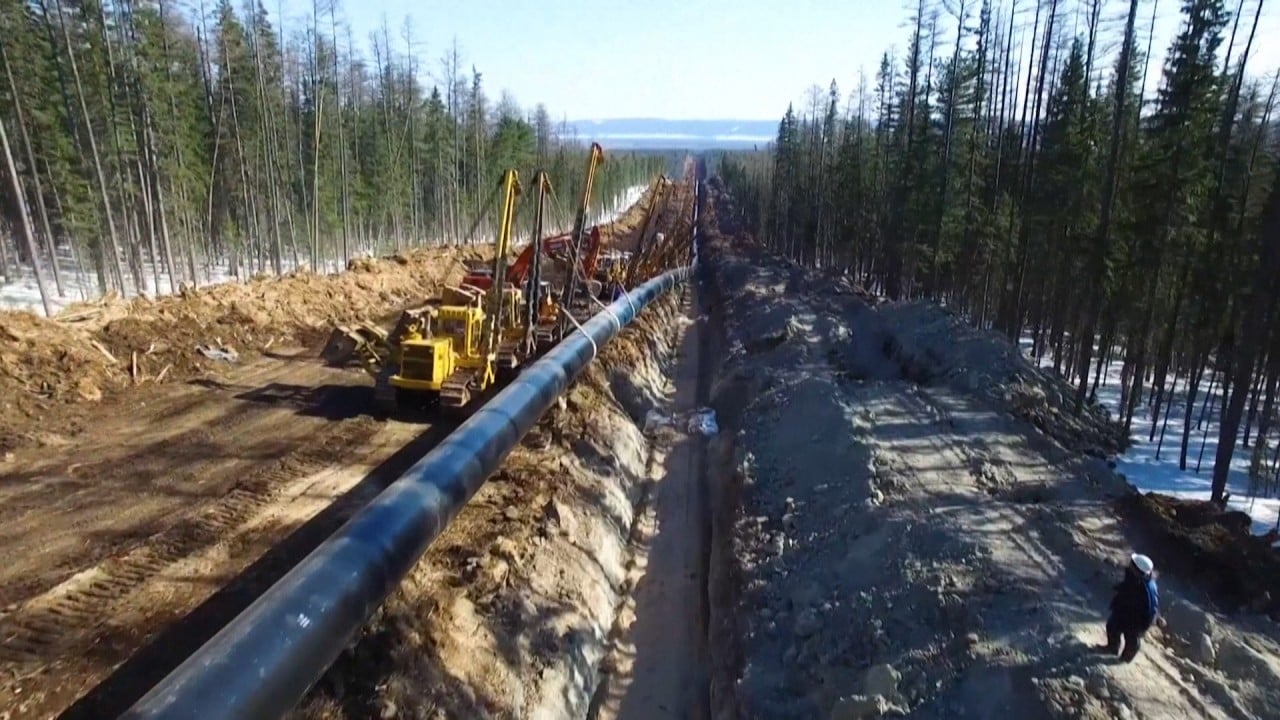
China turns on the tap to Russian gas in Yangtze River Delta as new pipeline section opens early
- 750km stretch of natural gas pipeline, linking cities in Shandong and Jiangsu provinces, will ease gas-supply bottlenecks in one of China’s most important economic powerhouses
- New section further bolsters energy trade between China and Russia, which has already reached a historic high this year
Russian gas now can reach eastern China’s Yangtze River Delta, as a new section of the east-route natural gas pipeline between the two countries came into operation on Wednesday.
The 750km (466-mile) section, which links Taian city in Shandong province and Taixing city in Jiangsu, was completed in 23 months, six months ahead of schedule, according to state media.
Part of the China-Russia east route natural gas pipeline, the new section joins another signature gas route – the West-East Gas Pipeline, which connects the Xinjiang Uygur autonomous region with Shanghai.
The section will help alleviate gas-supply bottlenecks in the Yangtze River Delta, one of China’s most important economic powerhouses, according to the state-owned PipeChina, known formally as China Oil and Gas Pipeline Network.
“The capacity of allocating resources and ensuring mutual supply in the eastern coastal areas will be further improved, which is of great significance for guaranteeing gas-supply security during peak times and for promoting economic and social development along the pipeline,” the company said via its official WeChat channel on Wednesday.
The new pipeline will increase the natural gas supply capacity of the Yangtze River Delta region to about 50 million cubic metres (1.77 billion cubic feet) per day, alleviating the reliance on imported liquefied natural gas (LNG) along the route, the company said. State broadcaster CCTV reported that the daily capacity had been 30 million cubic metres.
Commencing partial operation in December 2019, the China-Russia east-route natural gas pipeline is the third cross-border gas pipeline to China, after the ones from Myanmar and Central Asia.
It consists of a 3,000km segment – called the Power of Siberia – in Russia’s far east, and a 5,111km Chinese section that starts in the northeastern border city of Heihe, Heilongjiang province, and ends in Shanghai.
The entire route is expected to be in full operation before 2025, supplying around 38 billion cubic metres of Russian gas to China annually, which can meet the demand of about 130 million urban households, according to CCTV.
Signed in 2014, the contract between China National Petroleum Corporation and Russia’s Gazprom to supply gas via the pipeline was estimated to be worth US$400 billion over 30 years.
As both Beijing and Moscow are trying to insulate themselves from Western pressure, the two companies agreed in September to settle payments for gas supplies via the pipeline in roubles and yuan.
From January to October, China’s imports of Russian pipeline natural gas reached US$3.1 billion, or almost triple the import value during the same period last year, Chinese customs data shows.
China’s imports of Russian LNG also surged by 32 per cent to 4.9 million tonnes in the first 10 months, worth about US$5.3 billion, according to Chinese customs data.


